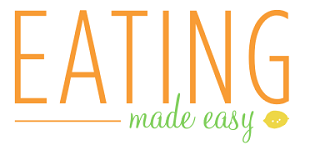Snacking is an important part of a healthy diet, since snacks prevent us from getting so ravenous at mealtime that we overindulge. But of course the type of snack we eat is key. Chips and cookies? Sorry, Charlie. A healthy combo of protein, carb, and a little fat? Yes!
As I was thinking about this topic today, I came across this article, and thought these tips on healthy snacking couldn’t be better! Thanks to Keri Gans, MS, RD (RD means registered dietitian) for coming up with such helpful snack info. Here are her suggestions (altered a little by me):
1. Limit a snack to approximately 200 calories maximum. (Much more than this turns your “snack” into a “meal”).
2. Turn coffee or a tea into a snack by adding a cup of low-fat milk or soy milk. A nonfat latte is a great source of protein and calcium in addition to being your afternoon pick-me-up.
3. Do not eat a carbohydrate alone (such as an apple or a serving of crackers); you will still be hungry. Instead, pair a carb with a lean protein or healthy fat. Have reduced-fat cheese with your apple, or some peanut butter on your whole grain crackers. This will help keep you satisfied.
4. It’s okay to have carbs alone before bed (such as a piece of fruit) because it doesn’t need to keep you full — you’re about to go to sleep. Of course, no need to snack before bed unless you’re hungry and think your growling tummy won’t last til morning.
5. Don’t double dip. For instance, don’t have string cheese with nuts, or string cheese with yogurt. Instead, choose one high-fiber carb and one lean protein or healthy fat; otherwise your calories (and fat) can add up. A better choice would be a piece of fruit with some nuts, or some carrot sticks and a yogurt.
6. When you eat straight from the bag, box, or can, you’ll consume more. Pre-portion items like nuts in resealable snack-size bags. Count out or measure your servings so you know how much you’re eating.
7. Eat snacks right in between meals. If you eat dinner 6 hours after you eat lunch, have a snack right at the 3 hour mark (if you’re hungry), as opposed to closer to one meal or the other. This way, the snack will really do it’s job to tide you over.
8. If buying an energy bar, read the label and look for more fiber and protein, less sugar and fat. And choose bars that have 150-200 calories, not more.
9. Just because it’s a “100-calorie pack” doesn’t mean it is a healthy snack. Make sure it offers some fiber and protein or healthy fat — and if not, skip it, or think of it as your one “treat” for the day.







No Comments